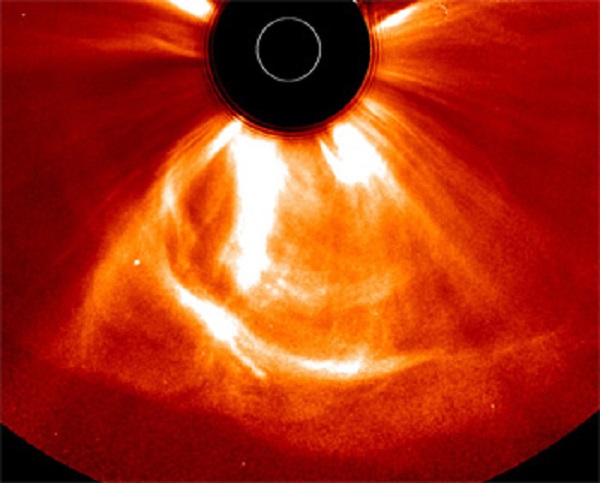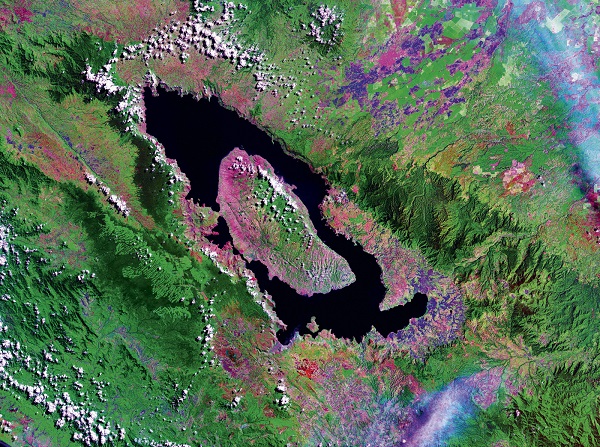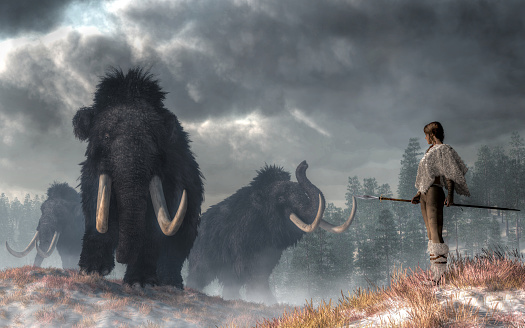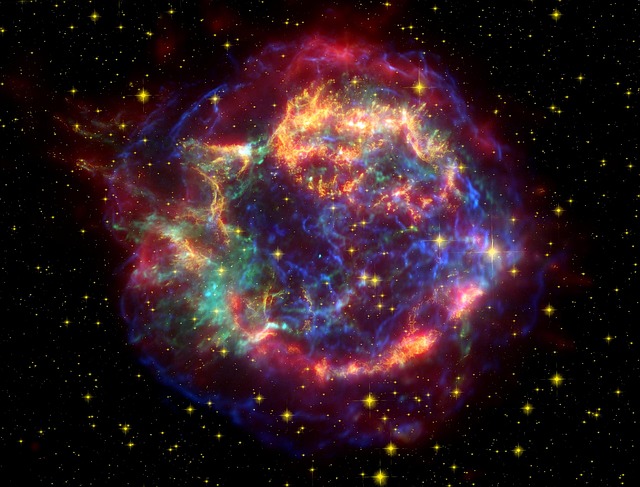7 times when nature almost destroyed humanity

People believe that they are powerful beings who can build a new city quickly or, conversely, destroy all life on the planet with thousands of nuclear strikes. We think we are in complete control of the situation and are ready for any challenge. But nature does not think so and regularly attempts to wipe out humanity from the face of the earth, fortunately to no avail. Or by this, it shows that, if necessary, she will bring everything to the desired result and that it only allows us to exist in a given period.
Solar storm 2012

Everyone was looking forward to 2012 because, according to the “predictions” of the Maya, then the end of the world was supposed to come. In principle, it could have come from behind the sun. In 2014, NASA confirmed that in July 2012, the most powerful storm in a hundred years hit the earth. Then a radiation storm arose on the sun, consisting of ultraviolet and X-ray radiation emitted by the star along with the magnetized plasma.
And if our planet at that moment were on the path of the outbreak, the storm would have reached it in about a day. At the same time, all electrical networks and devices would be out of order, throwing humanity back into the Middle Ages. In addition, such a strong storm could potentially reach the planet’s surface and break DNA strands, causing serious illness in living things.
Why is humanity still alive? We are lucky that the solar flare happened at that time. If it had happened a week earlier, the earth would have been on the straight path of a storm.
The eruption of the supervolcano Toba 75 thousand years ago

About 75 thousand years ago, during the last ice age, the supervolcano Toba erupted, ejected more than 2,800 cubic kilometers of magma, and created 800 cubic kilometers of ash.
Scientists believe that the ash cloud obscured the sun across the planet for several years, causing the temperature to drop, according to various estimates, from one to fifteen degrees. This caused the death of vegetation, animals, and people. By the time the earth recovered from the eruption’s effects, the human population had dropped to two to ten thousand people.
A comet in 1883

On August 12, 1883, astronomer Jose Bonilla observed more than 300 dark unknown objects crossing the solar disk at the Zacatecas Observatory in Mexico. Three years later, Bonilla published his discovery in the French newspaper L’Astronomie, attaching photographs. Astronomers believed that Jose had captured simple dust covering the lens of his telescope. However, they were wrong.
In 2011, researchers at the National Autonomous University of Mexico suggested that Jose Bonilla saw a cluster of debris from a large comet weighing about a billion tons. By calculating the comet’s parallax, scientists concluded that the comet and its debris flew only 600 kilometers above the earth. If at least some of them hit the planet, this could lead to the extinction of humanity.
Ice Age 195 thousand years ago

195 thousand years ago, the next round of the Cenozoic Ice Age began, which led to a serious cooling of the earth’s surface and the covering of most of the land with ice. In those days, icebound the surface to South Africa, destroying vegetation and putting animals at risk of extinction.
The same was true of the people driven by ice to South Africa, where the number of our ancestors was reduced to several hundred reproducing individuals. If icebound the surface of these places, humanity would not have survived such a test.
Our ancestors were lucky to be in South Africa, where various plants and many species of animals were found abundantly, which helped them survive.
Supernova explosion 340 thousand years ago

In 1972, Italian astronomers discovered that 340,000 years ago, a supernova exploded near the solar system, leaving behind a gas bubble and turning into a small neutron star. Scientists believe that the huge doses of radiation that reached the planet greatly affected life on its surface, including our ancestors, causing them burns. The explosion was so powerful that its light eclipsed the sun.
And suppose a supernova was closer to the solar system, then, according to scientists. In that case, it could destroy twenty percent of the earth’s atmosphere and sterilize the surface, destroying all living things on it, except the most resistant to radiation.
Apophis in 2013

The asteroid Apophis is quite famous and is one of the most dangerous astronomical objects for our planet. In 2013, it flew 14 million 460 thousand kilometers from the earth, which seems to be a huge distance, but is less than a tenth of the distance to the sun.
Its diameter is about 325 meters, and in a collision with our planet, the force of the explosion, according to various estimates, would be from 506 to 1200 megatons. For comparison: the power of the explosion of the Tunguska meteorite was from 10 to 40 megatons and the explosion of the most powerful atomic bomb (Tsar Bomba) – from 57 to 58.6 megatons.
Researchers believe that the diameter of the crater in the fall of Apophis would be almost six kilometers. The consequences would be huge destruction over an area of thousands of square kilometers and, possibly, an asteroid winter that would finish off the remaining survivors.
Spanish flu of 1918

Viruses are also nature, and like the still ongoing coronavirus pandemic, in the early 20th century, the Spanish flu gripped many people. The Spanish flu was likely the largest influenza pandemic regarding the number of people infected and died. According to various estimates, over the two years of the pandemic, at least 550 million people were infected with the Spanish flu, which at that time was 30% of the world’s population, and from 17 to 100 million people died, which made up 5.3% of the population.
Humanity was lucky that this flu gave a mortality rate of 3–20%. The virus did not mutate; otherwise, most of the world’s population could die, and the rest would have to split into small isolated groups not to catch the mutated strain. This would throw humanity back hundreds of years.




